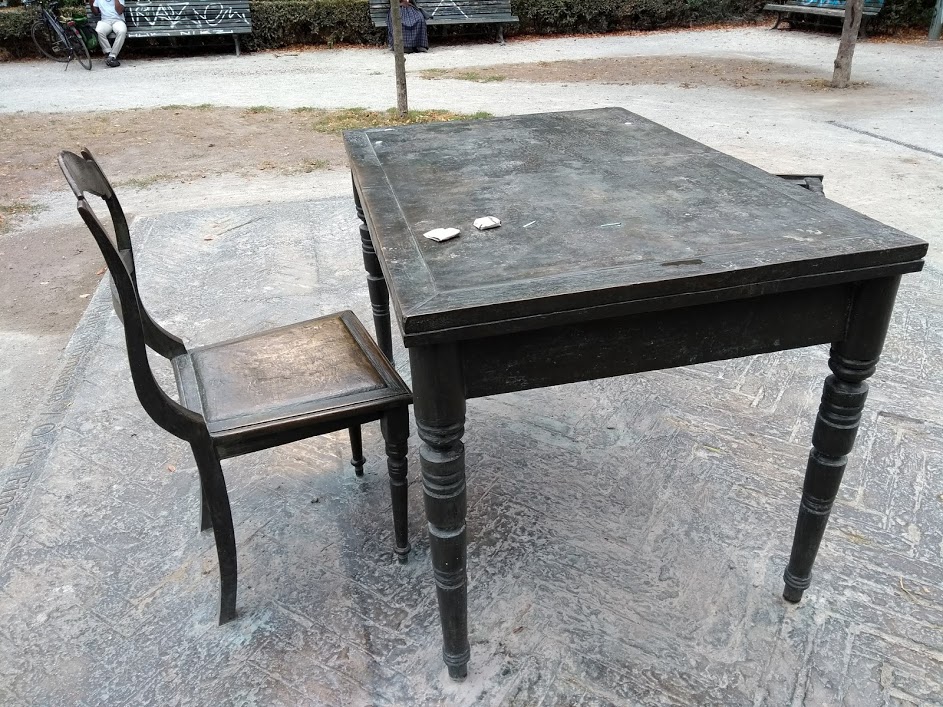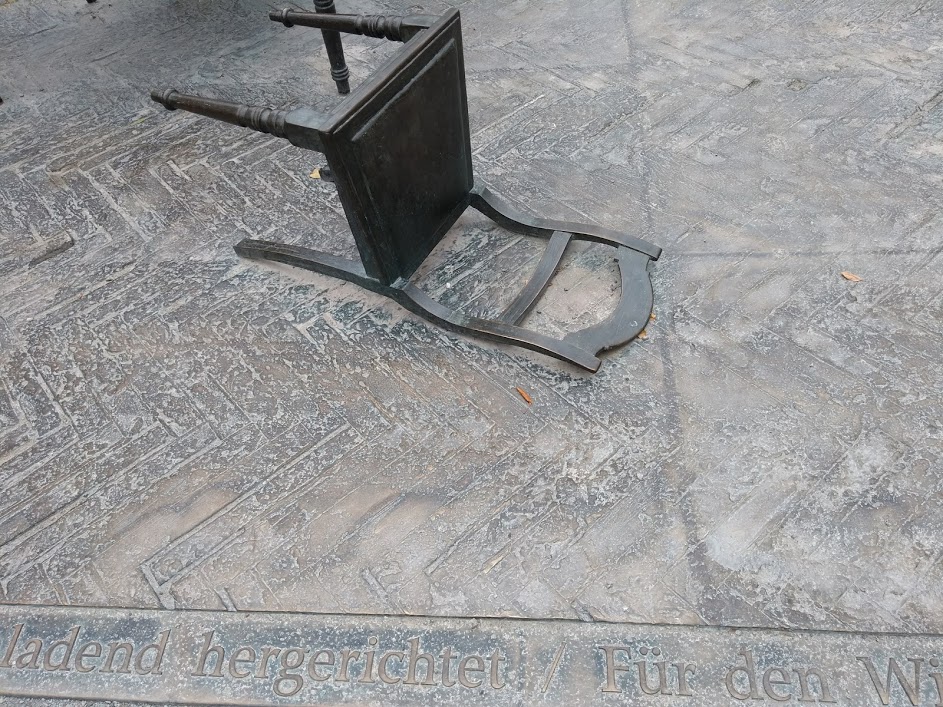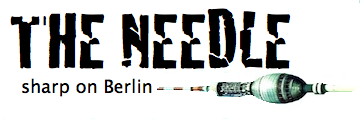The Deserted Room
In Koppenplatz, in Berlin’s Mitte, you might be surprised to see an overturned chair next to a table in the middle of the square’s garden. A second chair is still standing.
Walk closer. The chairs and table are made of metal, they are fused to a false parquet. Someone has left a book of matches on the table, and a snubbed out cigarette. Below, around the rim, runs script. It seems a room, without walls or a ceiling. Like a ghost, you can walk right in.
Is it sculpture? Or a monument? If the latter, then what for? The “Deserted Room” is not so obvious.

Walk around the edge of the installation, and, if you like, read the poem:
“…O die Wohnungen des Todes, (Oh the houses of death) / Einladend hergerichtet ( invitingly appointed) / Für den Wirt des Hauses, der sonst Gast war- (for the landlord of the house who was once a guest) / O ihr Finger (Oh you fingers,) / Die Eingangsschwelle legend (Laying the threshold) / Wie ein Messer zwischen Leben und Tod – (like a knife between life and death) // O ihr Schornsteine, (Oh, you chimney stacks,) / O ihr Finger, (Oh you fingers,) / Und Israels Leib im Rauch durch die Luft! (And the body of Israel going up in smoke!).”
The poem—with its allusions to both the Psalms and the chimneys of the crematoria—has a byline: Nelly Sachs. Who is she? A German-Jewish poet born in Berlin who won the Nobel Prize in Literature in 1966. She fled with her mother from Nazi Germany in 1940 to Sweden, as some of the last Jews able to leave the city. Her poetry is often compared to that of her friend Paul Celan. She died in 1970 in Stockholm. “O die Wohnungen des Todes” is a work from 1947, written in the shadow of the Shoah.

So what is this then: a monument to Nelly Sachs? Or does the monument’s location, in the Rosenthaler Vorstadt, the old Jewish neighbourhood, communicate something else?
In the late eighties, the GDR began commemorating the fate of its German Jews. This came after a long period when Holocaust education in East Germany was limited, subdued by a myth of collective anti-fascism. In the year 1988––in the same year that work began on the New Synagogue around the corner from here– there was the proposal for a Kristallnacht pogrom memorial. In 1989, Karl Biedermann and Eva Butzmann won the competition. Their proposal was, in a formal sense, in the tradition of other 1980s conceptual monuments. There were delays in the project’s completion, however: conflict between different levels of government about who should pay around the time of German Reunification.”The Deserted Room” was only completed in 1996. Many GDR projects unquestionably had to be completed by the new Germany, as a matter of contrition for past misdeeds, in a time of suspicion about Germany’s future as a united and potentially aggressive force in Europe.
It’s easy to find this information online, but what does the room communicate without any additional background? Is its meaning made clear by the script running around its edge? Or from its context in this neighbourhood––where Ostjuden lived, where so many people were forced from their homes under National Socialism? I admire the concept: that we are trespassing a space in that moment just after the people have been taken away; we are witnesses only to the mute furniture, the absence of humanity at the scene of the crime. But I wonder too if the memorial is too discreet. Do we risk being left with some overly heavy, and ugly, furniture, and a place to sit and smoke your cigarette. How much do we need to know in order to make sense of this quiet corner of a Mitte park?
Or would making this space more obvious ruin it? Make it lose its power and not take us by surprise as it should––as if no one had knocked on the door?

If this article interested you, you might also like to continue reading about Stolpersteine in Berlin on The Needle.
